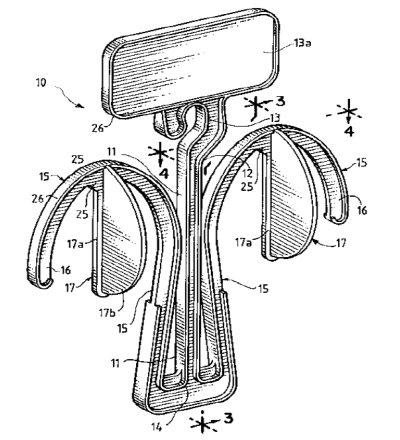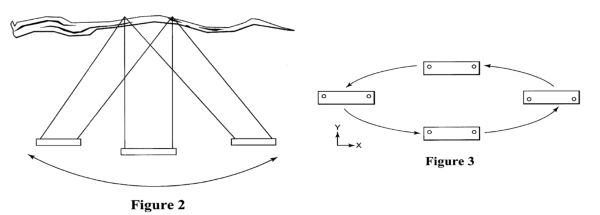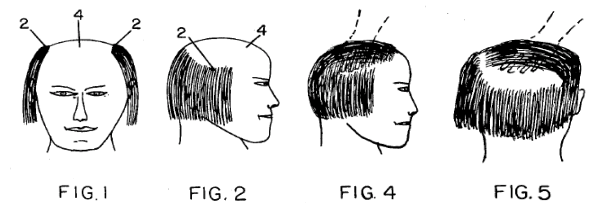January 2010 The A to Z of Inventing project
Tom Kulaga kicked off the new year with a discussion of the A to Z of Inventing project. Tom introduced the project, which will take one idea from conception to commercialization. Each month the meeting will be devoted to addressing an aspect of the invention and commercialization process.
Tom discussed Louis Foreman's book. At the August 2009 TIA meeting, Louis introduced his book and gave a very informative discussion of how to evaluate an idea to determine if it is feasible. Tom discussed how to determine if an idea is commercially feasible. Louis Foreman says that the following factors should be considered, in order:
- What is the product? What is the feature that is being sold?
- Who is the customer? What type of person will buy the product?
- How will the customer react to the product? Is there a real need for the product and will customers buy it?
- How much money is needed for startup and for operational costs? These costs will vary depending upon if the product is to be licensed (a patent will be needed in that case) or if the product will be manufactured, distributed, and marketed under control of the inventor.
- Where will the money come from?
A new way to swing!
To illustrate the evaluation, Tom presented an idea from an issued patent. The idea is to move a swing seat sideways, as shown below in Figure 2, or in an elliptical pattern, a shown in Figure 3. Click the figures to read the patent. The inventor was the young son of a patent attorney. Because of the public outcry over such a silly patent, the Patent and Trademark Office re-examined the issued patent and cancelled the claims.
Using the idea of a new way to swing, Tom led the discussion of the evaluation. For the first factor, Tom asked what would be sold with this idea. The idea is to move a swing around in a different way. It is primarily a method of swinging, which would be very hard to sell or market. One possible product could be a swing set. As the second factor was considered, it was pointed out that the idea cold not be enforced because it was a method for swinging that would be practiced by children. This idea was quickly dismissed as not being commercially feasible. That is, the inventor could not profit from it.
Tom stopped the evaluation at this point because there was no reason to continue. Why try to develop and market something that had no customers and, even if there were, could not be enforced.
It was suggested that maybe what could be sold would be a universal type joint that would allow the swing to move. The original idea was not feasible. But, being a creative group, TIA members were thinking up new ideas related to the original idea. The new idea was not evaluated at the meeting. If this were a real idea to be pursued, the next step would be to continue brainstorming, followed by evaluating the new ideas.
The combover idea
Tom then moved on to another idea that was patented. This idea was a method for combing hair, shown below. The idea here is to comb the hair of a partially bald man to hide the bald spot.
Tom led the discussion asking what is being sold. Considering the first factor in this example, hair salons would offer the combover to men as part of their services.
The second factor considered was who is the customer. In this case the customer could be the hair salons, who would be practicing the invention. Other customers would be bald or balding men who want to cover the top of their head.
The third factor considered was how would the customers react to what is being sold. The combover idea was from a 1977 patent. Polyester leisure suits were popular when the combover patent issued. The consensus was that today's customers would not react well to combovers and the idea would not be well accepted.
We stopped the evaluation at this point because there was no reason to continue. Why try to develop and market something that the customer would not buy.
 The shoe hanger idea
The shoe hanger idea
The last idea presented was for a shoe hanger for displaying shoes in a retail store. Tom said that he went shopping and bought some beach shoes. The shoes were displayed in the store on a plastic hanger that showed the shoe size.
Again, Tom led the discussion asking what is being sold. Considering the first factor in this example, the product is a hanger that holds shoes.
The second factor considered was who is the customer. In this case, several customers were identified. One customer would be stores that sells shoes and desires to present them in an attractive manner. Another customer would be shoe manufacturers who want their shoes to be easily viewed by prospective retail purchasers. Yet another customer would be show owners who would want to store shoes from a hanger.
The third factor considered was how would the customers react to what is being sold. The shoe stores and the show manufacturers would like the idea of the shoe hanger because it would allow them to attractively present their products to shoe purchasers. The hangers make shopping more convenient by presenting the product in an organized manner. Shoe owners may be receptive to the idea because they would have a convenient way to store their shoes. But, it was noted that the idea may need to be modified for shoe owners because the soles may be dirty. The shoe owner would not want to soil anything next to the shoes.
The fourth factor considered was what would the costs for startup and operations. One member pointed out that a mold would be needed for the plastic hanger. The mold could be expensive, up to $100,000. But once the mold is made, the operational expenses would be low and would mostly be the cost of the plastic.
The fifth factor considered was the source of the funds. Because of the high capital requirements for startup, the members discussed the need for someone willing to invest substantially in the initial phases with the expectation of recouping the investment quickly once production starts.
The shoe hanger idea was determined to be commercially feasible, depending upon the ability to raise the required capital.
Evaluation conclusions
In a short time, three ideas were evaluated. Louis Forman said at the August 2009 TIA meeting that inventors need to "Fail early and fail often." The short exercise illustrated that it is possible to look at ideas and figure out if they are feasible.
Next Month
Tom asked everyone to think of ideas for the February meeting. Rather than look at ideas in patents, he wants to have real ideas by real inventors.
Tom cautioned everyone that presenting an idea to the TIA members may be a public disclosure. In order to protect an idea, a United States patent must be filed within 12 months of the first public disclosure or offer for sale. Members wishing to present an idea to the TIA members should take this into consideration before deciding to present the idea at a TIA meeting. Tom also cautioned everyone that, because the TIA has very creative members, there is the possibility that someone may suggest an improvement to an idea that would make that person a co-inventor.
Tom said that the inventors will remain solely responsible for their inventions. If an inventor wishes to pursue commercialization of their invention, they must make it happen. The inventors are responsible for obtaining and paying for patent protection. Inventors are responsible for all aspects of their invention and they retain all ownership rights to their invention. By presenting their idea to the TIA, the membership will be using the idea as the subject matter of workshops and discussions. It is hoped that everyone will learn from the experience.
The goal is to have several members present their ideas to the TIA members for evaluation. One or more of the ideas will be selected to be the subject of the A to Z of Inventing program. Through the A to Z of Inventing program, the selected ideas will be used for workshops and discussions as the TIA members consider how to commercialize the ideas.
Other business
Before the January meeting was adjourned, Tom made several announcements. First, it is time to pay annual dues. The TIA dues are $30 for the full year and are due in January. Everyone was requested to get their checks to Ann Alexeff.
The TIA is liquidating the library. Several old issues of Inventors Digest magazine were offered to the members in attendance.
The meeting adjourned and reconvened at Ryan's in Oak Ridge.
- Login to post comments



